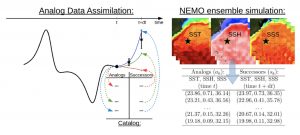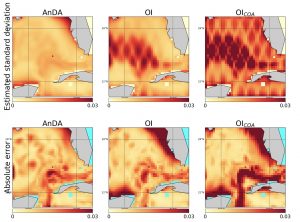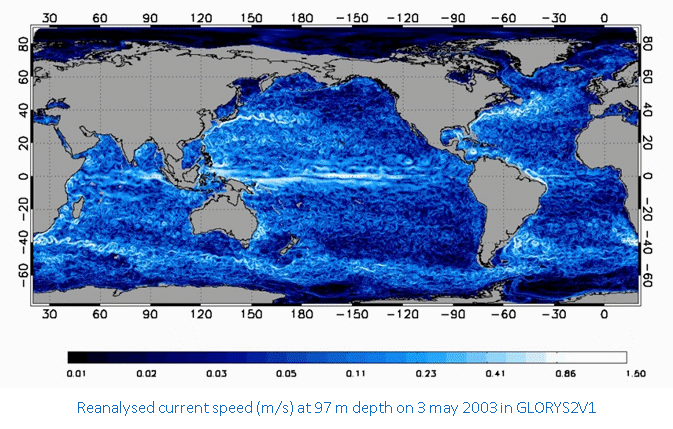DATA-DRIVEN DATA ASSIMILATION
PI and organization: Pierre Tandéo (IMT Atlantique)
Co-Is: Ronan Fablet (IMT Atlantique), Stéphanie Leroux (Ocean Next)
External experts: Thierry Penduff (IGE), Julien Le Sommer (IGE), Jacques Verron (Ocean Next), Bertrand Chapron (IFREMER), Pierre Ailliot (IMT Atlantique), Cédric Herzet (IMT Atlantique)
The aim of the 3DA project is to prove that recent Data-Driven techniques, combined with Data Assimilation tools, are able to outperform well stated interpolation methods, especially those used for the treatment of data from spatial oceanography. 3DA is based on the combination of the Analog Data Assimilation technique (AnDA) and a NEMO-based ensemble simulation (OCCIPUT). The analog forecasting method is using already seen situations to predict a variable of interest in the future. The considered variable is the Sea Surface Height (SSH), provided by satellite altimetry. The OCCIPUT simulation is used to feed the analog forecasting method and learn the SSH dynamics.
 Figure 1. Graphical abstract of the project.
Figure 1. Graphical abstract of the project.
The proposed AnDA methodology, combined with the OCCIPUT dataset, is compared to the various Optimal Interpolation (OI) schemes, among which the Conventional Objective Analysis (OICOA) presented in Le Traon et al. 1998, and more elaborated strategies, using carefully tuned spatiotemporal covariances, as in the CMEMS gridded sea level anomaly product (DUACS L4 product). Results of this 3DA project show three important points: (i) AnDA is a kind of adaptive OI procedure, learning at each time step and each position relevant covariance structures, (ii) AnDA interpolations are more realistic, respecting the good spatial and temporal properties of the flow even at high frequencies, and (iii) AnDA is producing relevant estimated error fields, which are flow-dependent and not observation-dependent as in OI.
 Figure 2: Monthly averages of estimated standard deviation and absolute error of OIs and AnDA centred on March 8th, 2004.
Figure 2: Monthly averages of estimated standard deviation and absolute error of OIs and AnDA centred on March 8th, 2004.


